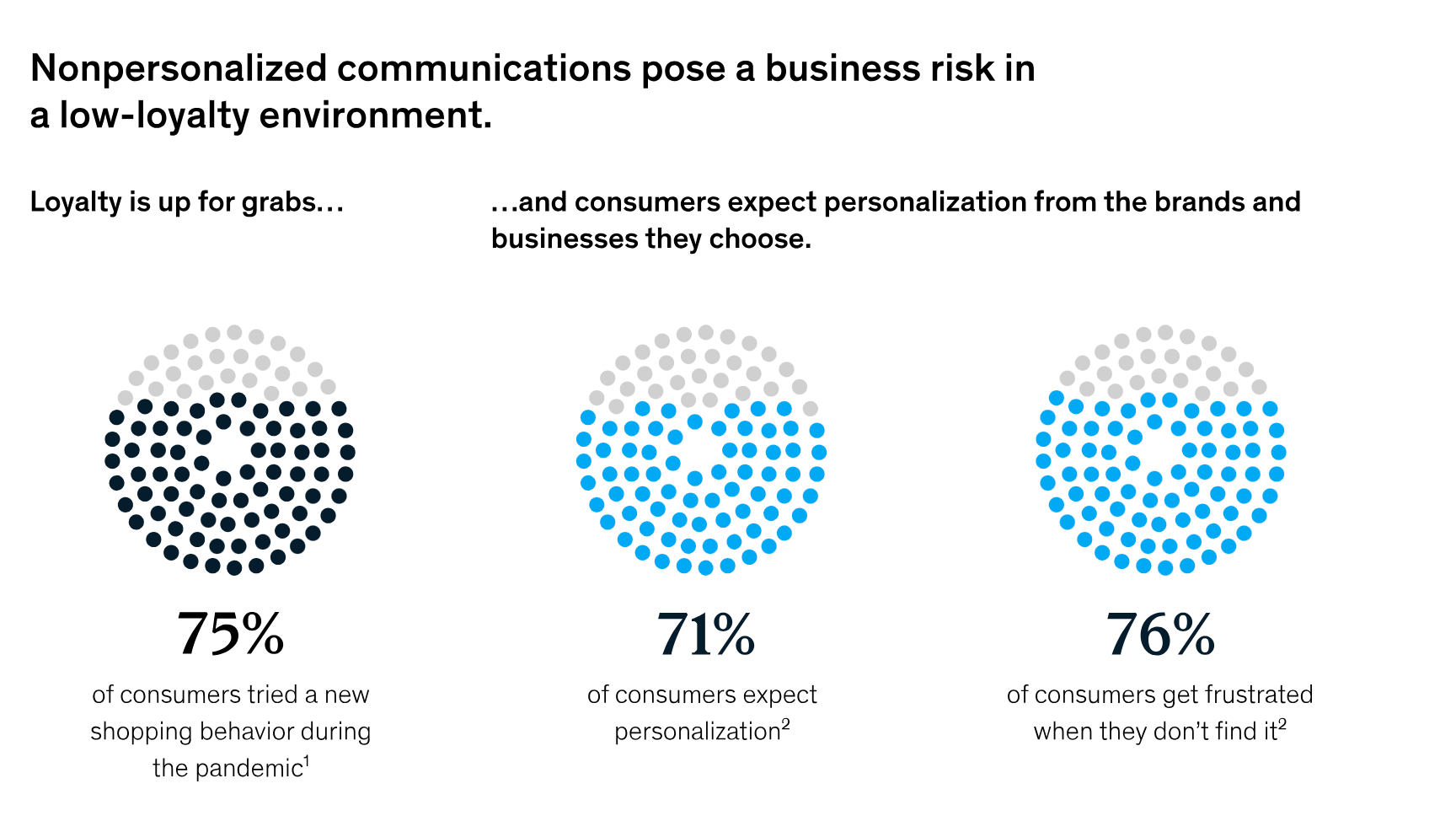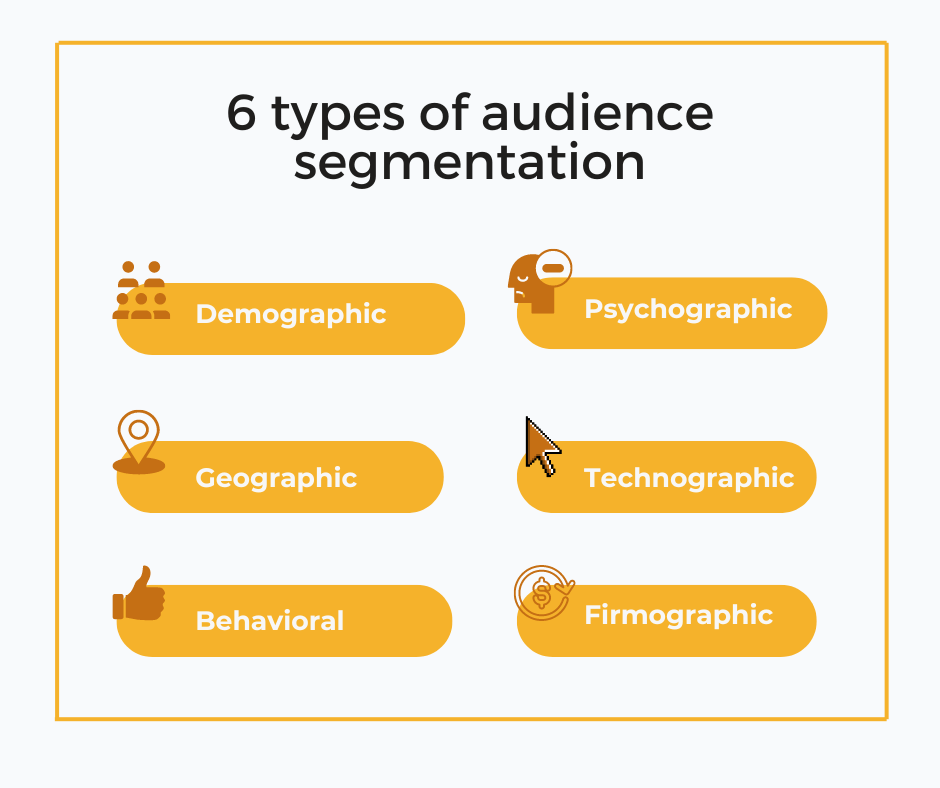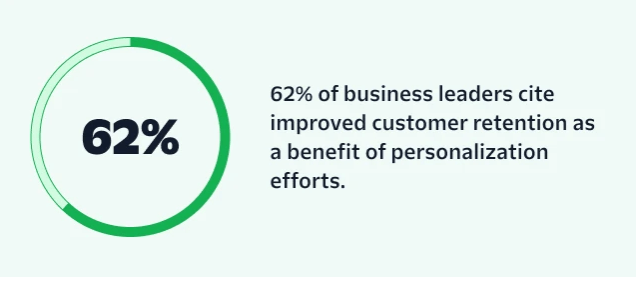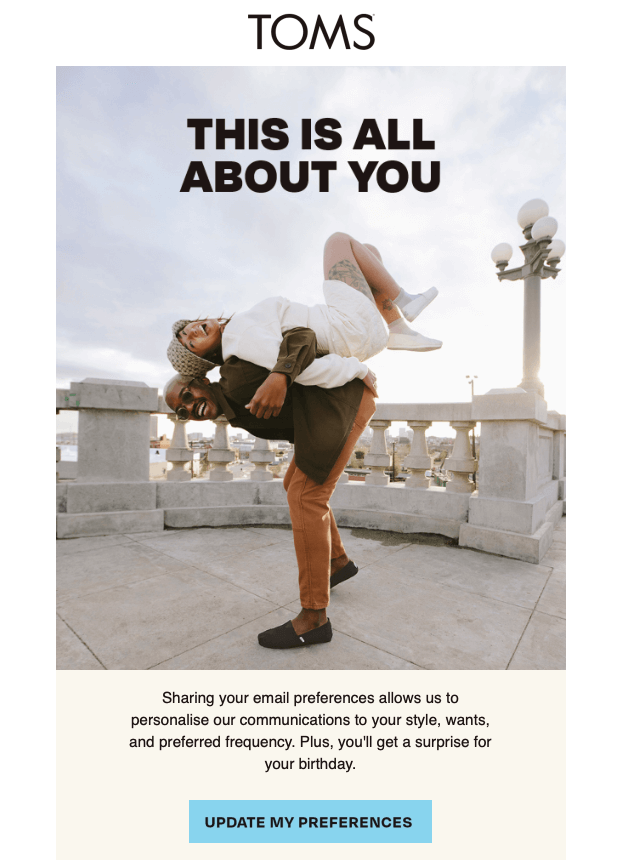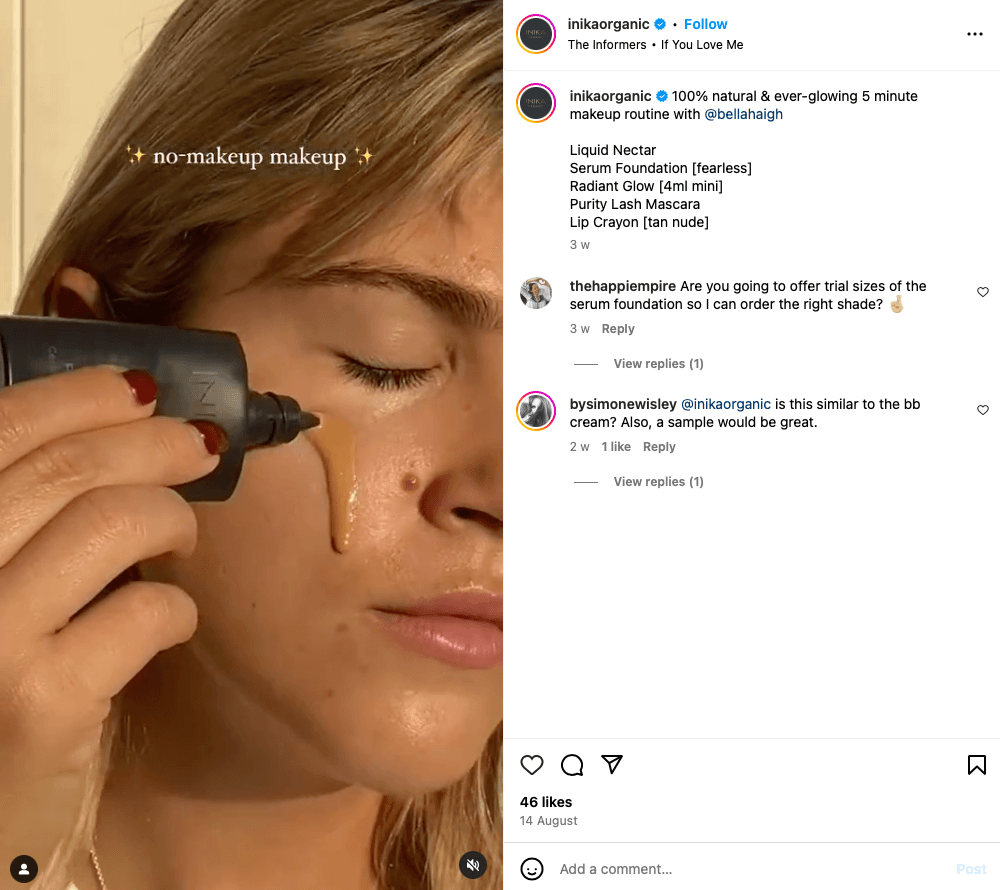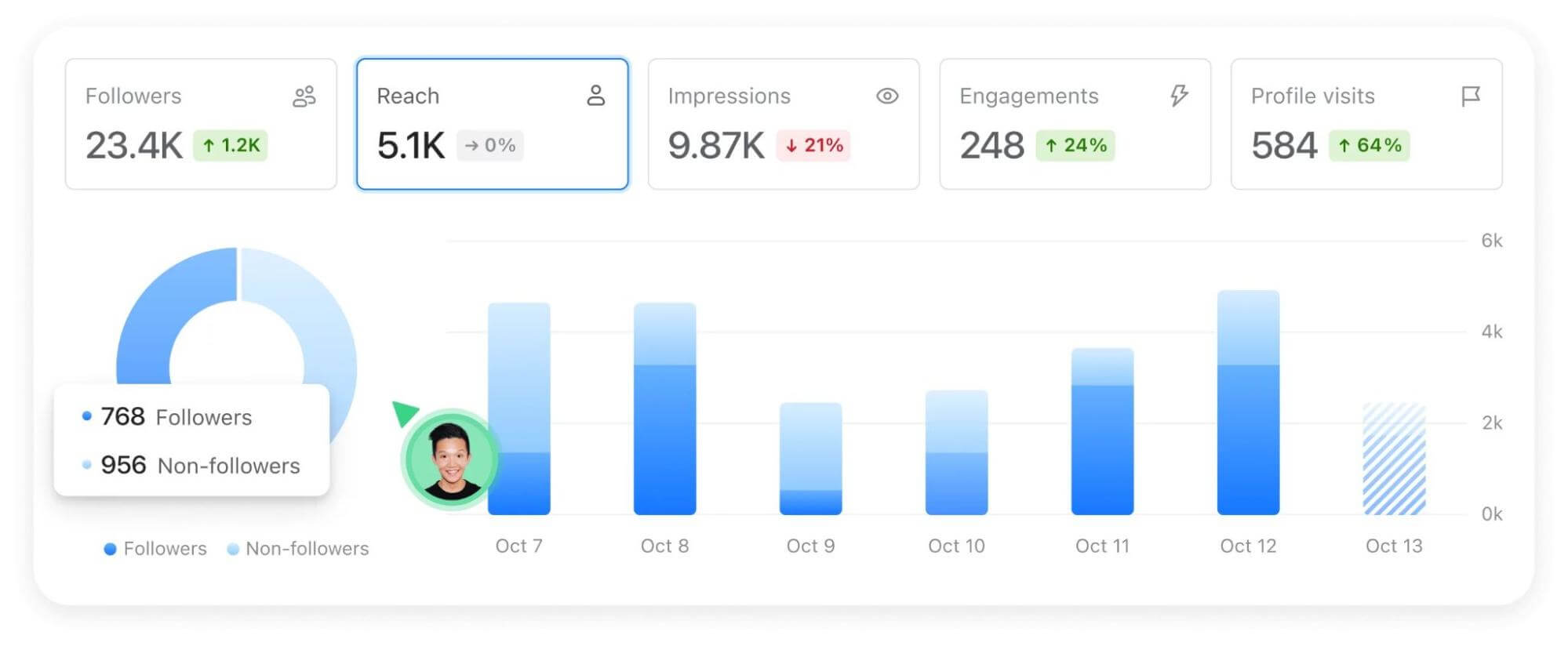Creating content that appeals to your audience can be difficult. Audiences are huge, diverse, and particular, and there are so many platforms and content styles that marketers can struggle to spark engagement.
Personalization is key to getting the right content in front of the right audience, but it’s impossible to give every customer what they want on an individual level.
Audience segmentation divides your audience into smaller, more manageable groups and allows you to create personalized content at scale. You can target different subcategories within your audience and offer them the kind of content they engage with, all without burning through resources.
In this article, we’ll talk about audience segmentation, its benefits, and how you can implement it to boost your content marketing strategy and perfect your ABM campaigns.
Contents
What is audience segmentation: a resourceful guide for marketers
Audience segmentation is the process of breaking down your wider audience into categories based on common attributes.
The purpose of audience segmentation is to gain a deeper understanding of your audience so that you can more precisely target your marketing efforts.
No audience is a hive mind – every brand’s audience contains unique people with different experiences, expectations, and needs. Customers value personalization, but marketers cannot possibly market to each individual customer on a one-to-one basis. Prospecting tools may help you find a great audience from the outset, but you should still focus on tailoring their experience more closely as you build a long-term relationship.
Audience segmentation creates groups with common demographics, values, and behaviors and allows marketers to target the group, rather than the individual. Marketers can create personalized content at scale, to a few groups rather than a thousand individual customers.
Many brands forego audience segmentation and instead try to cover all their bases. In theory, casting a wide net should bring in a large and varied audience.
But in reality, brands that personalize win out. According to a 2021 study by McKinsey & Company, 71% of consumers expect companies to deliver personalized interactions, and 76% are unhappy when brands don’t deliver.
And this trend shows no sign of stopping. Hubspot’s 2024 State of Marketing report found that 96% of the marketers surveyed claimed personalization led to repeat business, and 94% said personalization increased sales.
Personalized content requires a deep understanding of your audience, so brands need every tool in their arsenal to keep up.
That’s what audience segmentation is – a powerful personalization tool that can help you gain a deeper understanding of your audience and tailor content that appeals to them.
The different types of audience segmentation
So, what is audience segmentation in practice? Well, you can segment audiences in a number of different ways.
- Demographic. Demographic segmentation includes the basics, such as age, gender, socioeconomic status, and occupation. This data is vital to learning where your audience hangs out, their budget, their day-to-day struggles, and the kind of content they respond to.
- Psychographic. Psychographic segmentation goes deeper and looks at personal attributes such as personality, feelings, and values. This data allows you to understand what matters to your audience on an emotional level, letting you craft content that connects, builds relationships, and fosters loyalty.
- Geographic. This includes geographic location data such as countries, states, regions, cities, towns, etc. This data is useful for releasing content in the right time zones and helps you understand your audience’s culture. Businesses that operate across multiple regions can tailor their content strategy to appeal to that region’s unique way of life.
- Technographic. Technographic data looks at how tech-savvy your audience is. This kind of data is vital for tech companies looking to create content that appeals to a user’s technological knowledge.
- Behavioral. Behavioral data looks at a customer’s history with your brand. It includes purchasing history, prior communications like emails or phone calls, and how the customer has engaged with your content in the past.
- Firmographic. Firmographic data is a B2B tool that businesses can use to segment business prospects. B2B sales and marketing teams can segment businesses by size, industry, financials, and tech-readiness to craft more personalized pitches.
These segments overlap and complement each other. You can take data from each category and use it to build customer personas that reflect your target audience – we’ll get into more detail about customer personas in a moment.
The benefits of audience segmentation
Audience segmentation offers a number of advantages over broad audience targeting.
- Personalization at scale
We talked a little about personalization already, but it’s worth repeating that personalization is important to customers and brings value to businesses. When you’re dealing with a large audience, however, one-on-one personalization is impossible. Audience segmentation groups customers together through common attributes, allowing marketers to tailor content on a larger scale.
- Return on investment
Audience segmentation allows you to personalize at scale for less cost, leading to better ROI on your marketing campaigns.
- Customer relationships
Personalized content reaches audiences on an emotional level, creating great first impressions and building on that to develop deeper relationships.
- Increased engagement levels
Content that targets a specific audience is more likely to engage them. They’re more likely to share your content, growing brand awareness and creating further engagement.
- Customer loyalty
A personalized experience can increase customer satisfaction and help you develop stronger customer relationships, turning customers into loyal brand advocates.
- Valuable data
Audience segmentation helps you gather data about your audience and put it to use in more effective ways. Audience segmentation data can help you identify your target audience, create tailored marketing, and develop strategies based on facts.
How to use audience segmentation to create personalized content
If you’re thinking about trying audience segmentation, this handy guide should get you started.
Define your targets
Every marketing strategy needs a goal, so it’s best to define yours up-front. Having a clear set of targets and measurable metrics to track them gets teams on board and ensures everyone is moving towards a common purpose.
You want to start using audience segmentation – think about why.
Perhaps you want to generate some demand for your upcoming product launch. For this, you can monitor engagement on your demand generation posts such as clicks, likes, and follows.
Then, you can determine if your audience segmentation strategy is working and which areas need improvement.
Tracking this kind of data also lets you further segment your audience. For example, if you’re trying to get more engagement on your posts, you can monitor what kind of content gets extra likes, shares, and clicks. You can discover who is clicking and determine what triggers might be leading to those increased engagement levels.
Having targets and tracking key metrics is a cycle of continuous discovery and improvement for your audience segmentation strategy.
Gather customer data
If your business already has customers, existing customer data is a valuable resource for audience segmentation.
Gather data such as:
- The main demographics of your customers
- Their purchase history
- How they’ve interacted with your brand in the past – for example, if someone has contacted customer support and you know how to record a phone call, you can analyze that interaction for valuable insights
- Customer survey results – if you’ve never conducted one, now is a great time!
- Focus group results – again, if you’ve never held one, this is a great opportunity
If you’re a new company and don’t have customers yet, you can conduct market research. You can do this by:
- Thinking about who benefits most from your products.
- Creating surveys tailored to the data you need.
- Locating places online where your potential customers hang out, such as social media or web forums.
- Spreading word-of-mouth amongst friends and family.
- Reaching out to anyone interested in participating in your research.
- Conducting focus groups.
- Using third-party data from market research companies.
- Hanging out online where your audience posts and reading up on what they have to say.
Audience segmentation requires a deep knowledge of your audience, and data is integral to building that.
Develop customer personas
Customer personas are a useful audience segmentation tool.
A customer persona is a fictional representation of someone within a segment of your audience. They have attributes that reflect your ideal customer – the person who will benefit most from your product.
Building a customer persona is a lot like building a fictional character. Let’s use an example to give you an idea of where to start.
Let’s say your brand is an eco-friendly, budget cosmetics company operating in the US but looking to eventually grow globally.
Your ideal customer might be:
- Gen-Z or millennial-aged.
- Cares about the environment and social causes.
- Working but not affluent.
- Trying to save money whilst being conscious of their impact on the world around them.
- Struggles to find high-quality cosmetics on their budget.
- Irritated at eco-friendly alternatives being so expensive.
- Eager to learn about skincare, makeup, hair care, etc.
You can create a buyer persona that looks like this:
- Age: 30
- Occupation: Office Administrator
- Location: a costly, bustling city in the US
- Values: environmentally, politically, and socially conscious
- Wants: eco-friendly, good-quality cosmetics they can afford
- Struggles: juggling work, high rent, social life, and money to find the resources to take care of their skin
This brand’s content marketing strategy might revolve around partnering with eco-friendly influencers, creating educational video content about skincare, creating makeup tutorials, championing social causes, and showcasing their environmentally conscious practices.
You can see how audience segmentation can help you create customer personas that power social media personalization in your content strategy.
Personalize your content to each audience segment
That’s just one segment of your audience. Personalization across different groups is where audience segmentation really shines.
You can create as many customer segments as you need. Once you have your segments, it’s time to create content that appeals to their demographics, interests, needs, and struggles.
To personalize your content to each segment, think about:
- Which channels they like to consume content on – certain social media platforms, email campaigns, blogs, web forums, etc.
- What type of content they engage with most – text, image, video, or audio content.
- The style of content they engage with – educational, environmental, social causes, comedy, touching emotional stories, short or long-form videos, case studies, research papers, customer testimonials, etc.
- The tone of voice and language they respond to – different demographics respond to different tones. For example, tech-savvy audiences understand jargon and might find it condescending if you guide them through basic terms and acronyms.
- Which platforms support which content types and styles the best – for example, short-form video thrives on TikTok, Instagram Reels, and YouTube Shorts.
To personalize to each audience segment, understand their preferred platforms and content, and meet them where they are. You can create a piece of content and adapt it for each audience segment, platform, and style to make personalization easier.
For example, you might create an educational email newsletter. You can send a slightly different version of this newsletter to different audience segments to create the most impact. You might use different tones of voice, a variety of lead magnet examples, add or remove images and videos, or try a different aesthetic based on what you know about that specific audience segment.
Monitor your content strategy
As we mentioned before, gathering data and tracking your metrics is an ongoing process. You’ll need to keep monitoring your audience segmentation strategy to determine if it’s leading you to success.
Look for things like:
- An increase in social media followers.
- More engagement on your content.
- New email sign-ups.
- More clicks through to your website or store.
- Increased sales.
These are signs that your audience segmentation strategy is working. If you’re falling behind on your targets, the data will show you where and how you can get back on track.
What is audience segmentation and how can it help you personalize content?
Audience segmentation is the process of dividing your audience into groups with common attributes. These attributes are based on demographic, psychographic, geographic, behavioral, technographic, and firmographic data.
Segmenting your audience is the key to scaling content personalization efforts. Customers expect some level of personalization and will reward brands that do it well with repeat purchases, loyalty, and advocacy.
Using audience segmentation to break your audience down into manageable groups, you can tailor content to each segment, decreasing the cost of personalization efforts whilst improving ROI. If you need a head start, there are several automated marketing tools available that offer segmentation services.
Every customer wants to feel like a VIP, and audience segmentation allows your brand to better understand your audience and create the kind of content they love.





